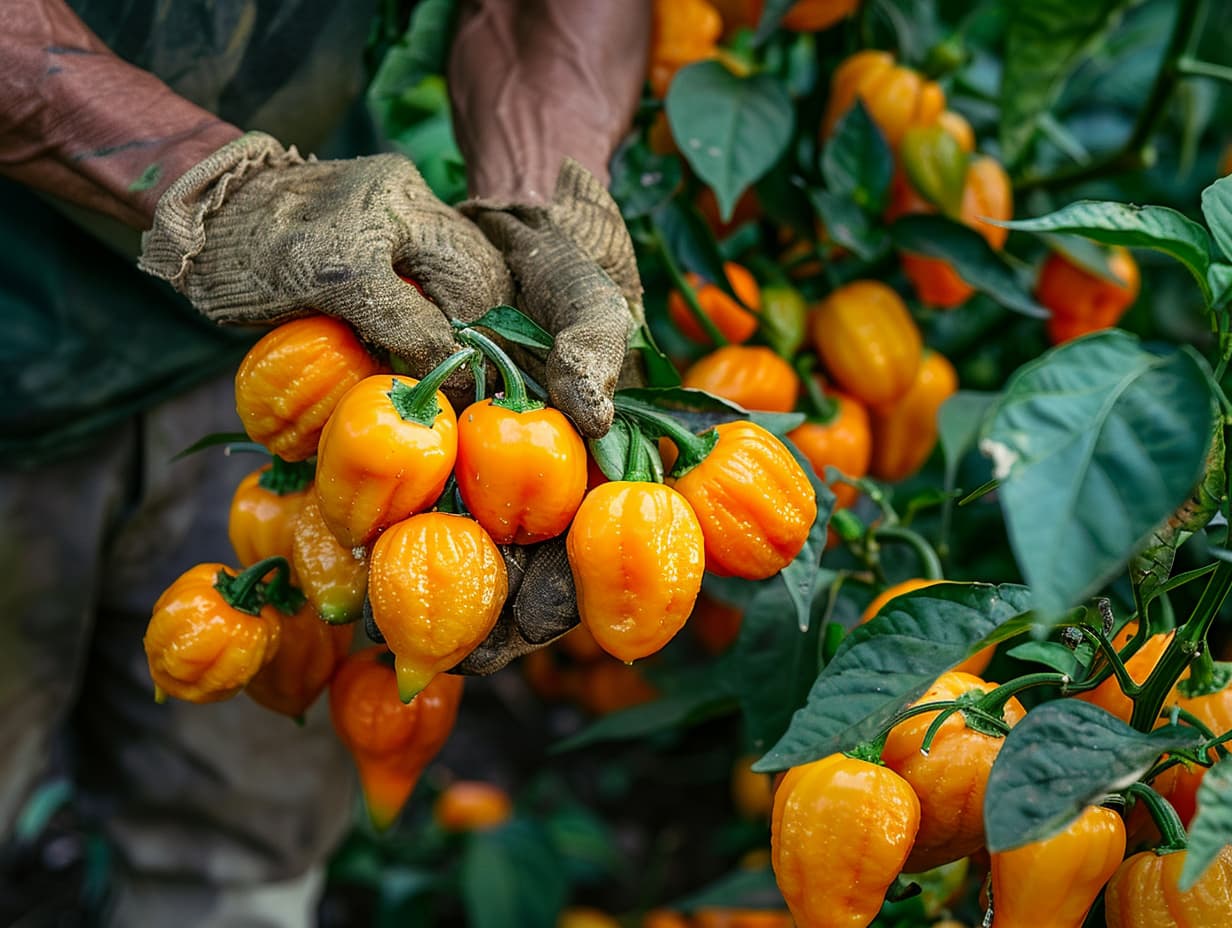Introduction
Habanero peppers, known for their fiery heat and vibrant flavor, are a popular choice among gardeners and culinary enthusiasts. Growing these peppers can be a rewarding experience, but achieving a bountiful harvest requires understanding the right planting techniques. Whether you’re a seasoned gardener or a beginner, this guide will provide you with proven strategies to maximize your habanero harvest. From selecting the best seeds to nurturing your plants through their growing stages, we’ll cover everything you need to know to enjoy a spicy and successful crop.
Choosing the Right Seeds
The first step in growing habanero peppers is selecting high-quality seeds. Look for seeds from reputable suppliers that offer a variety of habanero types. Some popular varieties include the Red Savina, Orange Habanero, and Caribbean Red. Each variety has its unique characteristics, so choose one that suits your taste and growing conditions.
When purchasing seeds, check for freshness and viability. Fresh seeds typically have a higher germination rate. It’s also helpful to read reviews or seek recommendations from experienced growers to ensure you’re getting the best quality seeds.
Preparing the Soil
Habanero peppers thrive in well-draining, nutrient-rich soil. Start by selecting a sunny location in your garden that receives at least six hours of direct sunlight daily. The soil should have a pH level between 6.0 and 6.8, which is slightly acidic to neutral.
To prepare the soil, begin by clearing the area of weeds and debris. Loosen the soil to a depth of 12-15 inches, incorporating organic matter such as compost or aged manure. This not only improves soil fertility but also enhances its drainage capacity. Conduct a soil test to determine if any amendments are needed to adjust the pH or nutrient levels.
Seed Starting and Transplanting
Habanero peppers have a long growing season, so it’s best to start seeds indoors 8-10 weeks before the last expected frost date. Use seed-starting trays filled with a sterile seed-starting mix. Plant the seeds about 1/4 inch deep and keep the soil consistently moist but not waterlogged.
Maintain a temperature of 70-85°F (21-29°C) to ensure optimal germination. Using a heat mat can help maintain consistent warmth. Once the seedlings develop two sets of true leaves, they can be transplanted into larger pots to encourage root growth.
About two weeks before transplanting outdoors, begin hardening off the seedlings by gradually exposing them to outdoor conditions. This process helps the plants acclimate and reduces transplant shock.
Planting in the Garden
Once the danger of frost has passed and the soil has warmed up, it’s time to transplant your habanero seedlings into the garden. Space the plants 18-24 inches apart in rows that are 24-36 inches apart. This spacing ensures adequate airflow and reduces the risk of diseases.
Dig a hole slightly larger than the root ball of each seedling and gently place the plant in the hole. Backfill with soil and firm it around the base of the plant. Water thoroughly to help the plants settle in.
Watering and Mulching
Consistent moisture is crucial for habanero peppers, especially during flowering and fruit development. Water the plants deeply once or twice a week, depending on weather conditions. Avoid overhead watering, as wet foliage can lead to fungal diseases. Instead, use drip irrigation or soaker hoses to deliver water directly to the soil.
Mulching around the plants helps retain soil moisture, suppress weeds, and regulate soil temperature. Apply a 2-3 inch layer of organic mulch, such as straw or wood chips, around the base of the plants. Keep the mulch a few inches away from the stems to prevent rot.
Fertilizing
Habanero peppers benefit from regular feeding to support their growth and fruit production. Start by incorporating a balanced fertilizer into the soil at planting time. Once the plants begin to flower, switch to a fertilizer higher in phosphorus and potassium to encourage blooming and fruiting.
Avoid excessive nitrogen, as it can promote lush foliage at the expense of fruit production. A side-dressing of compost or a liquid fertilizer every 4-6 weeks can provide the necessary nutrients throughout the growing season.
Managing Pests and Diseases
Habanero peppers are susceptible to various pests and diseases, but with proper management, you can keep them at bay. Common pests include aphids, spider mites, and whiteflies. Regularly inspect your plants and use insecticidal soap or neem oil to control infestations.
Fungal diseases such as powdery mildew and blight can be problematic, especially in humid conditions. Ensure good air circulation by spacing plants properly and pruning any overcrowded foliage. Applying a copper-based fungicide at the first sign of disease can help prevent its spread.
Harvesting
Habanero peppers are typically ready for harvest 75-100 days after transplanting, depending on the variety and growing conditions. The peppers will change color from green to their mature hue, which can be orange, red, yellow, or even chocolate brown.
Use a sharp pair of scissors or pruning shears to cut the peppers from the plant, leaving a small stem attached. Wear gloves when handling habaneros, as their capsaicin content can cause skin irritation. Harvest regularly to encourage the plant to produce more fruit.
Conclusion
Growing habanero peppers can be a rewarding endeavor with the right techniques. By choosing quality seeds, preparing the soil, and providing consistent care, you can enjoy a bountiful harvest of these fiery peppers. Remember to water and fertilize appropriately, manage pests and diseases, and harvest at the right time. With these proven planting techniques, you’ll be well on your way to maximizing your habanero harvest and adding a spicy kick to your culinary creations. Happy gardening!
Q&A
1. What are the key factors for growing habanero peppers successfully?
The key factors for growing habanero peppers include selecting quality seeds, preparing the soil properly, providing consistent care, watering and fertilizing appropriately, managing pests and diseases, and harvesting at the right time.
2. How can I prepare the soil for growing habanero peppers?
To prepare the soil for habanero peppers, ensure it is well-draining, fertile, and slightly acidic. You can amend the soil with compost or organic matter to improve nutrient content and enhance the soil structure for optimal pepper growth.
3. When should I harvest my habanero peppers?
Habanero peppers should be harvested when they have reached their full size and color. They typically turn from green to vibrant red, orange, or yellow, depending on the variety. Harvesting at the right time ensures the peppers are at their spiciest and most flavorful.
4. How do I manage pests and diseases when growing habanero peppers?
To manage pests and diseases, regularly inspect your plants for signs of trouble, such as wilting or discolored leaves. Use organic pest control methods, such as neem oil or insecticidal soap, and practice crop rotation or spacing to reduce the risk of disease.
5. What are the benefits of growing habanero peppers in my garden?
Growing habanero peppers allows you to enjoy a bountiful harvest of spicy, flavorful peppers that can enhance your cooking. It’s a rewarding gardening experience that also provides the satisfaction of growing your own fresh produce with the right techniques and care.

